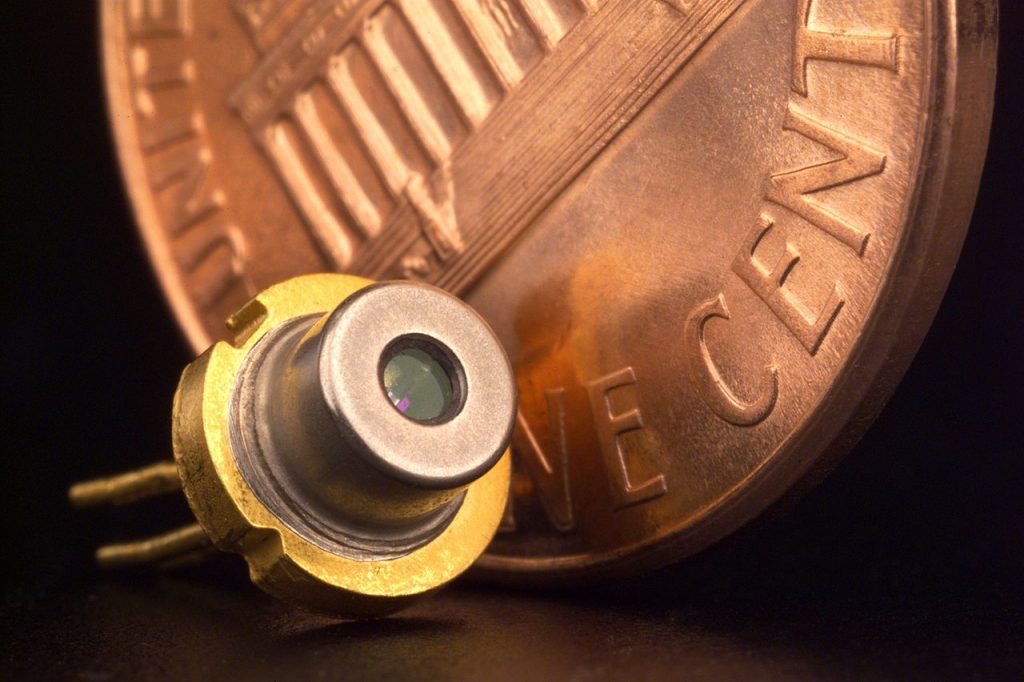We plan to use exclusively diode lasers in all our products because they are well suited to our needs. If you are interested in what these are, read on!

Diode lasers – typically we turn that around and say laser diodes – are semiconductor devices. A packaged laser diode is shown above. More than 90% of what you see is just the package making the unit big enough to handle and use.
At the meeting of two essentially electrically opposite types of materials (one heavily doped with extra electrons and the other highly stripped of electrons), we can produce photons (light) by applying a voltage across the two. The voltage causes electrons to move (i.e. current), and at the interface between the materials the extra electrons from one material match up with the holes (missing electrons) from the other material, and those combinations, or matches, produce photons. The ultimate result is that we put in electrical energy and get out optical energy!
The voltage we need to apply to a laser diode is very small and direct (DC), so we need batteries or converted conventional wall power (wall power in the United States is 120 volts oscillating (AC) at 60Hz (that would be going from the fully positive to the fully negative and back to the fully positive part of the wave, or a complete cycle, 60 times per second. Direct current or voltage has no wave, it is constant over time). Laser diodes typically require 5V DC or less, which is convenient for our purpose of packaging them in lightweight devices and powering with low voltage batteries.

The voltage we need to apply to a laser diode is very small and direct (DC), so we need batteries or converted conventional wall power (wall power in the United States is 120 volts oscillating (AC) at 60Hz (that would be going from the fully positive to the fully negative and back to the fully positive part of the wave, or a complete cycle, 60 times per second. Direct current or voltage has no wave, it is constant over time). Laser diodes typically require 5V DC or less, which is convenient for our purpose of packaging them in lightweight devices and powering with low voltage batteries.
If you want more details and many great pictures (which include the one shown here), check out https://en.wikipedia.org/wiki/Laser_diode.
